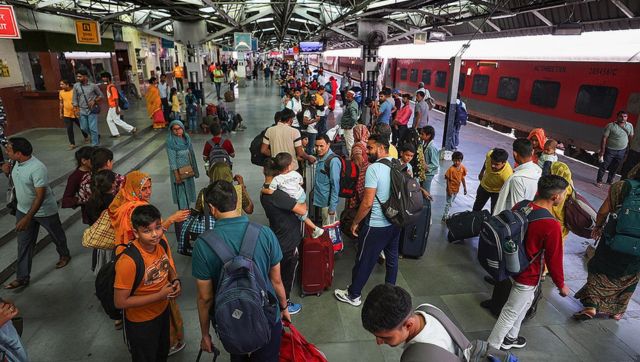Monsoons, a crucial factor for the Indian economy, are below normal and there are concerns that this may have a negative impact on markets. The concerns are well founded as lack of rain hurts rural consumption demand and pushes up prices of food articles further.
However, historical evidence prove that the impact of a drought-like situation on the markets may not be as deep as it has been made out to be. For example, in 2002, 2004 and 2009, when such a situation prevailed in the country, the Sensex and Nifty largely performed well. Equity markets moved up on factors such as pick up in global economic growth and election (2004 and 2009) rather than on monsoons.
In the current year, India has seen a strong mandate given to Prime Minister Narendra Modi and expectations are that he will take the right decisions for the economy. India has seen a period of low growth and high inflation with GDP growth down from over 8 percent levels to below 5 percent levels over the last few years and consumer price index-based inflation ruling at around 9.5 percent levels. This trend is expected to change with the policies of the new government.
There are positive cues globally too. The world is limping back to normalcy post the prolonged recessionary phase after the 2008 financial crisis. Central banks from the Fed and ECB to Bank of Japan are maintaining loose monetary policies and are keeping liquidity cheap in the system. An improvement in global growth coupled with cheap liquidity will drive flows into Indian equities.
The RBI is keen on containing inflation and has set a target of 8 percent and 6 percent for the CPI by the end of fiscal year 2014-15 and 2015-16, respectively. The government is looking to keep down prices of foodgrains given that it has enough buffer stocks and if distribution can be streamlined, food prices are unlikely to flare up. India produced record 263 million tonnes of foodgrains in fiscal 2013-14.
Agriculture accounts for around 14 percent of India’s GDP. Even with poor or no growth, the economy can grow at a good pace on the back of services and industry that have weights of around 60 percent and 26 percent, respectively.
Hence failure of monsoons is not likely to impact equity markets negatively if other domestic and global factors are positive.
The rainfall deficit is observed to be 37 percent below normal for the month of June 2014 as the monsoon has been weak throughout India. The prevailing drought-like condition is impacting kharif sowing.
The kharif crops, sown at the start of the south west monsoon which hits Kerala by the end of May, include oilseeds, pulses and rice.
As the monsoon rains advance towards north India, the sowing dates accordingly vary and it is done in July in North Indian states. These crops are totally dependent on the quantity of rain water as well as its timing. Too much or too little rains and even untimely showers adversely affect the crop output.
The El-Nino effect has had some impact but if it escalates from the current scenario, monsoon would be significantly below normal this season.
Arjun Parthasarathy is founder Investors are Idiots.com and INRBONDS.com. Follow him on twitter @arjunparthasara


)




)
)
)
)
)
)
)
)